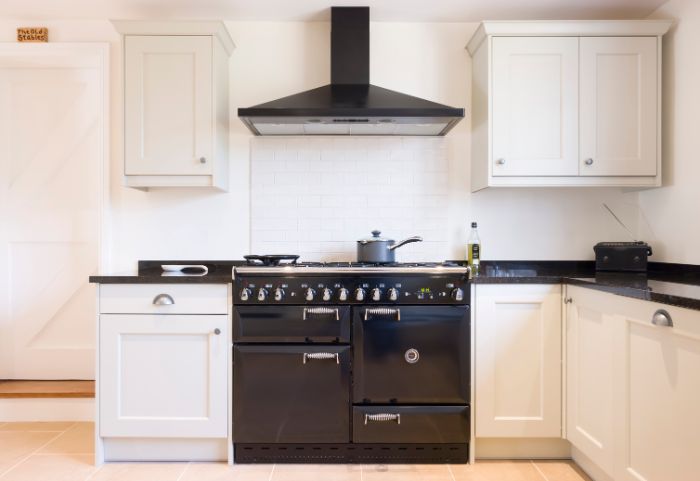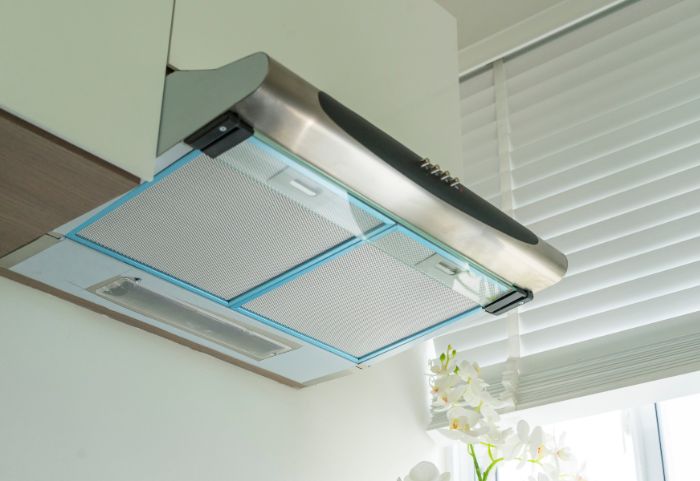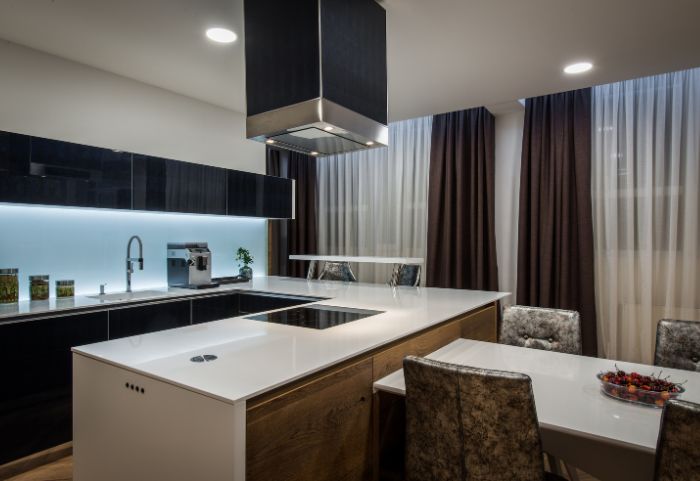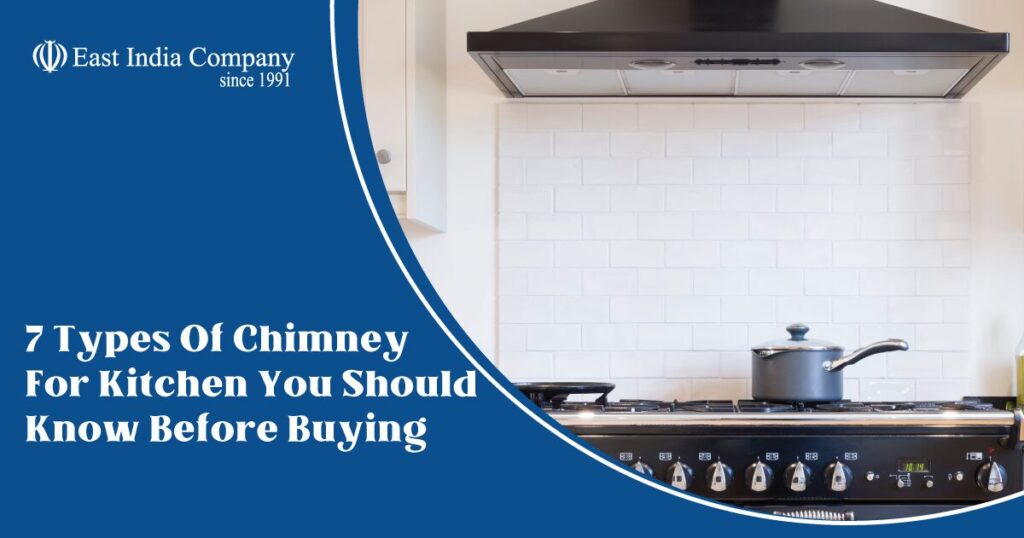Have you ever wondered which chimney is the best fit for your kitchen? Selecting the right kitchen chimney can make your cooking experience more enjoyable by reducing heat, smoke, and grease. At the same time, it should match your needs and kitchen layouts. So, to know what suits you best and to know more about types of chimney for kitchen, read till the end!
Let’s Begin
Cooking can be a delightful experience, but it often comes with unwanted heat, greasy surfaces, and lingering smoke that makes you cough. Imagine preparing your favourite meals without these hassles!
The right types of chimney for kitchen can transform your cooking space, providing a cooler, cleaner, and smoke-free environment. With various types available, each designed to suit different needs and kitchen layouts, choosing the perfect one can seem daunting. In this blog, we’ll explore seven types of chimneys for kitchen use, helping you make an informed decision that fits your culinary space perfectly.
7 Types of Chimney for Kitchen
Choosing the right kitchen chimney can greatly enhance your cooking experience and help keep your kitchen clean and smoke-free. With so many options available, it’s important to understand the different types of chimneys for kitchen use. Let’s explore seven popular types and their features, advantages, and disadvantages. By the end of this guide, you’ll have a clear idea of what to look for before purchasing.
1. Wall-Mounted Chimney

A wall-mounted chimney is one of the most common types found in many kitchens. As the name suggests, it is mounted on the wall right above your stove. This type is perfect for kitchens where the stove is placed against a wall. The wall-mounted chimney is space-efficient, taking up minimal space while providing excellent ventilation. It effectively removes smoke and odours, ensuring a clean cooking environment. Additionally, wall-mounted chimneys come in a variety of designs, allowing you to choose one that complements your kitchen decor. It’s also crucial to match the chimney size with your stove to ensure optimal performance.
2. Built-In Chimney
Built-in chimneys are integrated into the kitchen cabinetry, offering a seamless look. They are hidden from view, which makes them a great choice for those who prefer a minimalist kitchen design. Built-in chimneys are highly efficient in ventilating your kitchen and removing smoke. They save space and provide a clutter-free cooking environment. However, the installation of a built-in chimney can be complex and might require modifications to your kitchen cabinets. They are also typically more expensive than wall-mounted or island chimneys due to the custom installation.
| Also Read: what is modular kitchen and what are the types of modualr kitchen
3. Island Chimney

Island chimneys are designed for kitchens with a cooking island. They are suspended from the ceiling above the stove, providing 360-degree ventilation. This type of chimney is ideal for open kitchens, as it captures smoke from all directions. Island chimneys are known for their modern and stylish designs, adding a contemporary touch to your kitchen. They are highly effective in removing smoke and odours, making them a great choice for large kitchens. However, they require professional installation and can be more expensive than other types. Ensure that your kitchen has enough space to accommodate an island chimney, as they are typically larger and more prominent.
4. Downdraft Chimney
Downdraft chimneys are unique and innovative, designed to be installed directly into the countertop. They rise from the counter when needed and retract when not in use, providing a clean, unobtrusive look. Downdraft chimneys are perfect for modern kitchens with a sleek design. They are highly effective in capturing smoke and odours, especially in open-plan kitchens. However, they are typically more expensive than traditional chimneys and require professional installation. Downdraft chimneys also need to be strategically placed to ensure optimal performance.
| Also Read: Top 7 Kitchen Countertop Types For You Kitchen
5. Corner Chimney

Corner chimneys are installed in the corner of the kitchen, making them ideal for kitchens with limited space. They are designed to fit snugly into the corner, providing efficient ventilation without taking up much room. Corner chimneys are great for small kitchens or unconventional layouts. They are easy to install and maintain, offering a practical solution for smoke and odour removal. However, their placement might limit the design options and might not be as effective in large kitchens.
6. Auto Clean Chimney
Auto-clean chimneys come with a self-cleaning feature, making maintenance a breeze. These chimneys use advanced technology to remove oil and grease particles, preventing clogging and ensuring efficient performance. Auto-clean chimneys are perfect for those who want a low-maintenance option. They are available in various designs and sizes, catering to different kitchen needs. The main advantage of auto-clean chimneys is their convenience, as they reduce the need for regular manual cleaning. However, they can be more expensive than standard chimneys and might require professional servicing for optimal performance.
7. Straight Line Chimney

Straight-line chimneys are designed for compact kitchens with limited space. They are installed directly above the stove and extend in a straight line, providing efficient ventilation. Straight-line chimneys are great for small apartments or kitchens with a minimalist design. They are easy to install and maintain, offering a practical solution for smoke and odour removal. However, they might not be as powerful as other types of chimneys and could be less effective in larger kitchens.
| Also Read: 7 Modular Kitchen Accessories For Your Kitchen
Transform Your Culinary Space with East India Company
Choosing the right chimney for your kitchen is crucial, and we are here to guide you through the process. Experience the blend of tradition and modernity with The East India Company. Let us help you find the perfect chimney that will transform your cooking environment and make every meal preparation a delightful experience. We prioritise customer satisfaction, offering products that combine functionality with aesthetic appeal.
| For Latest Updates and Trends Checkout Official East India Company Instagram Page |
Summing Up
Understanding the different types of chimney for kitchen use is essential in making an informed decision. Whether you have a small, compact kitchen or a large, open-plan layout, there’s a chimney that will meet your needs. Consider the space, design, and ventilation requirements of your kitchen before choosing the right chimney. By selecting the appropriate type, you can ensure a clean, smoke-free, and pleasant cooking environment. So, take your time, do your research, and pick the best chimney for your kitchen.
FAQs Releated To Types of Chimney for Kitchen
1. Why do I need a kitchen chimney?
A kitchen chimney helps to remove smoke, heat, and grease particles from your kitchen, ensuring a cleaner and cooler cooking environment. It also helps in reducing odours and keeps your kitchen walls and cabinets free from oil and grease buildup.
2. How do I choose the right type of chimney for my kitchen?
Choosing the right type of chimney depends on your kitchen layout, cooking habits, and personal preferences. Consider factors like the size of your kitchen, the position of your stove, and the chimney’s features, such as suction power and maintenance requirements.
3. What is the difference between a wall-mounted and an island chimney?
A wall-mounted chimney is installed against a wall above the stove, while an island chimney is suspended from the ceiling above a cooking island. Wall-mounted chimneys are ideal for kitchens where the stove is placed against a wall, whereas island chimneys are suitable for open kitchens with a central cooking area.
4. Are auto-clean chimneys worth the extra cost?
Auto-clean chimneys are worth the extra cost if you want a low-maintenance option. They come with a self-cleaning feature that reduces the need for manual cleaning, ensuring efficient performance and longevity.
5. How often should I clean my kitchen chimney?
The frequency of cleaning depends on your cooking habits. For regular Indian cooking that involves a lot of frying and grilling, it’s advisable to clean the filters every two weeks. Auto-clean chimneys reduce the need for frequent manual cleaning.






